Bikaner – enlargening knowledge and goldglitter
12. February 2019
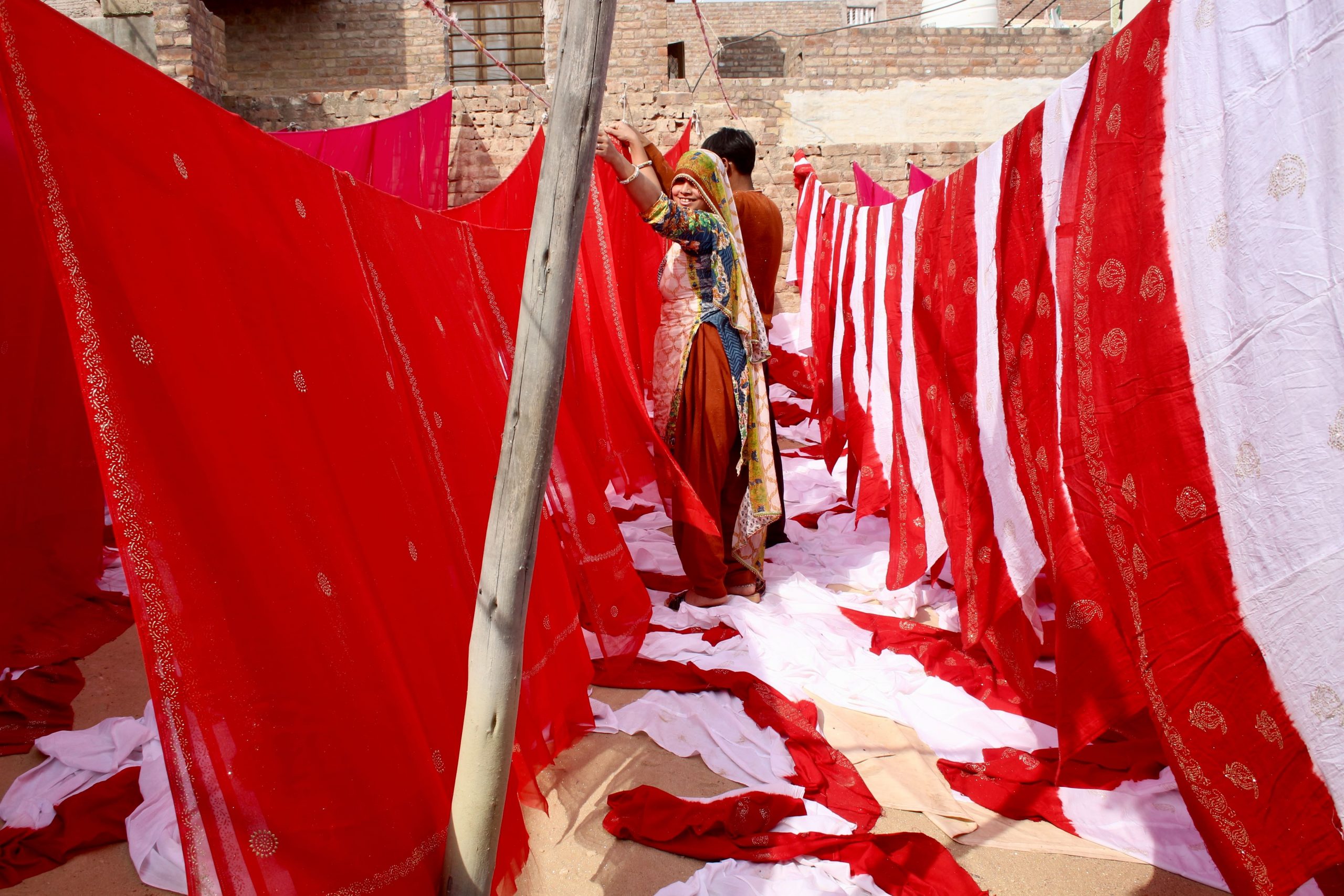
After I had told my friends about my dyeing discovery, they insisted on taking me to other places where I would see things that I would definitely like. They were right.
Firstly, I was taken to an unremarkablehouse where 6 gentlemen were sitting in a small room and fiddling around with small, precious stones. And they were really worth a lot. So the place is kept rather secret and the buyers are never delivered directly from there but meet somewhere else. I felt honoured to get an insight – whether we can also show to our travellers something is still questionable.
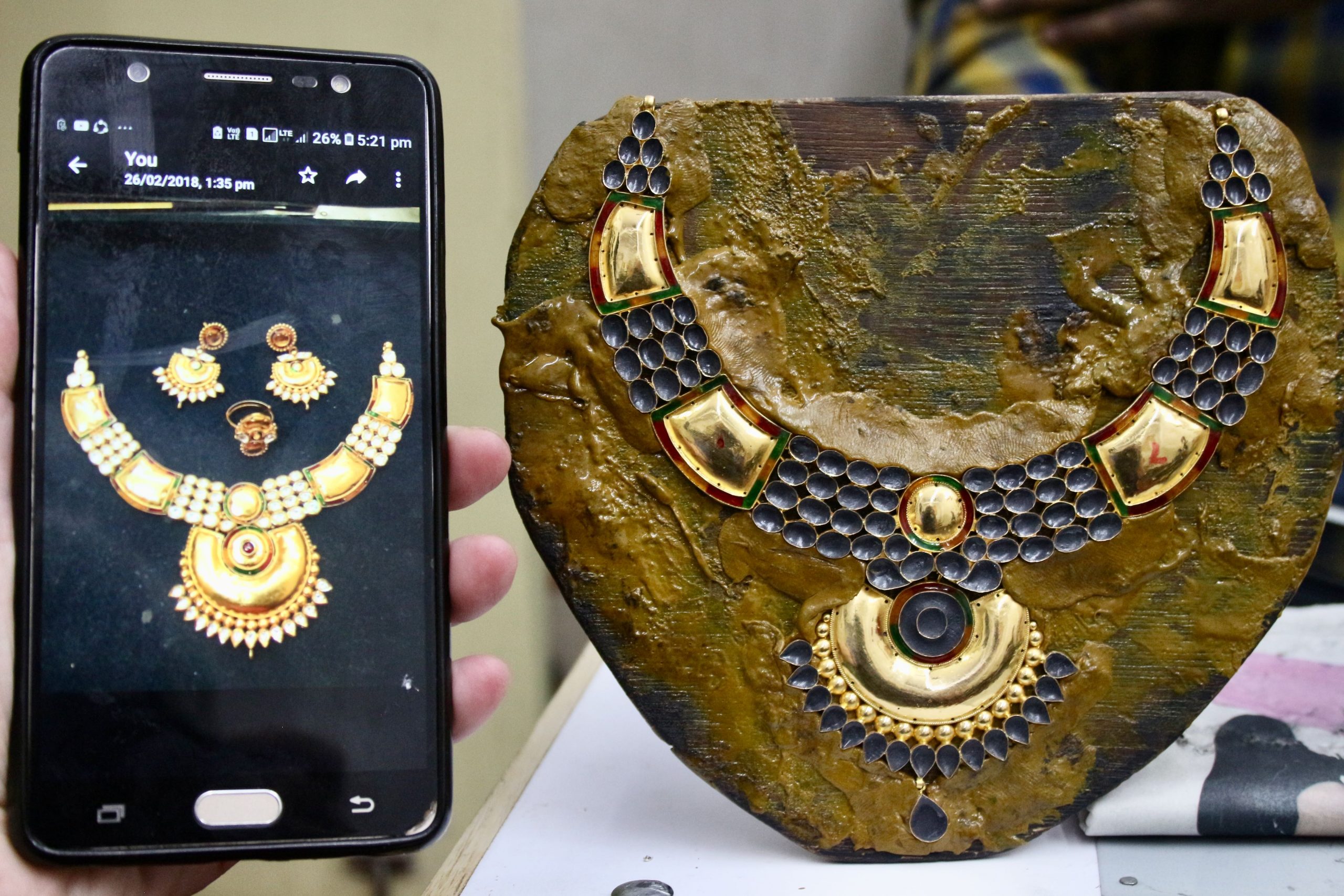 Jewellery in progress
Jewellery in progress
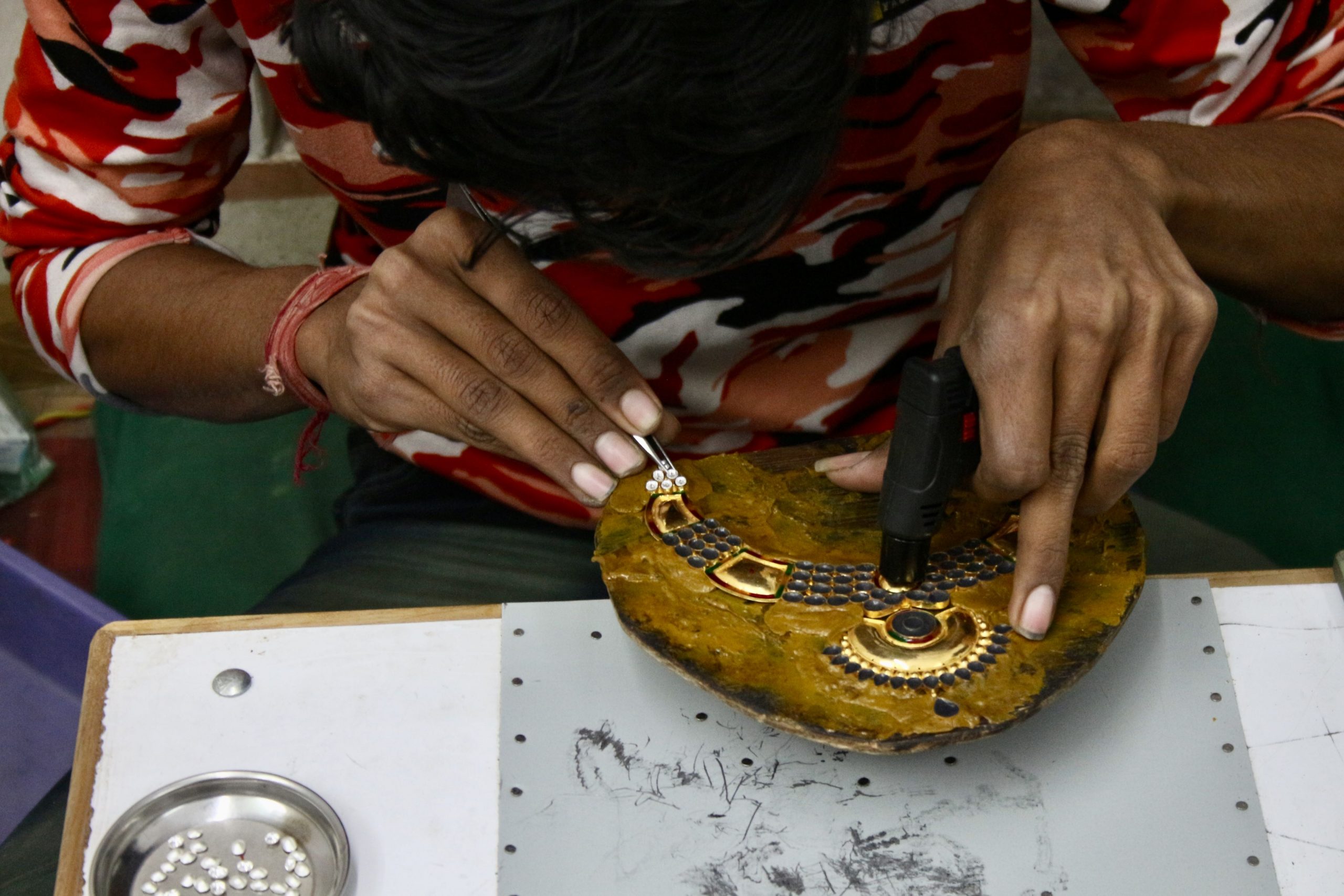 adding stones
adding stones
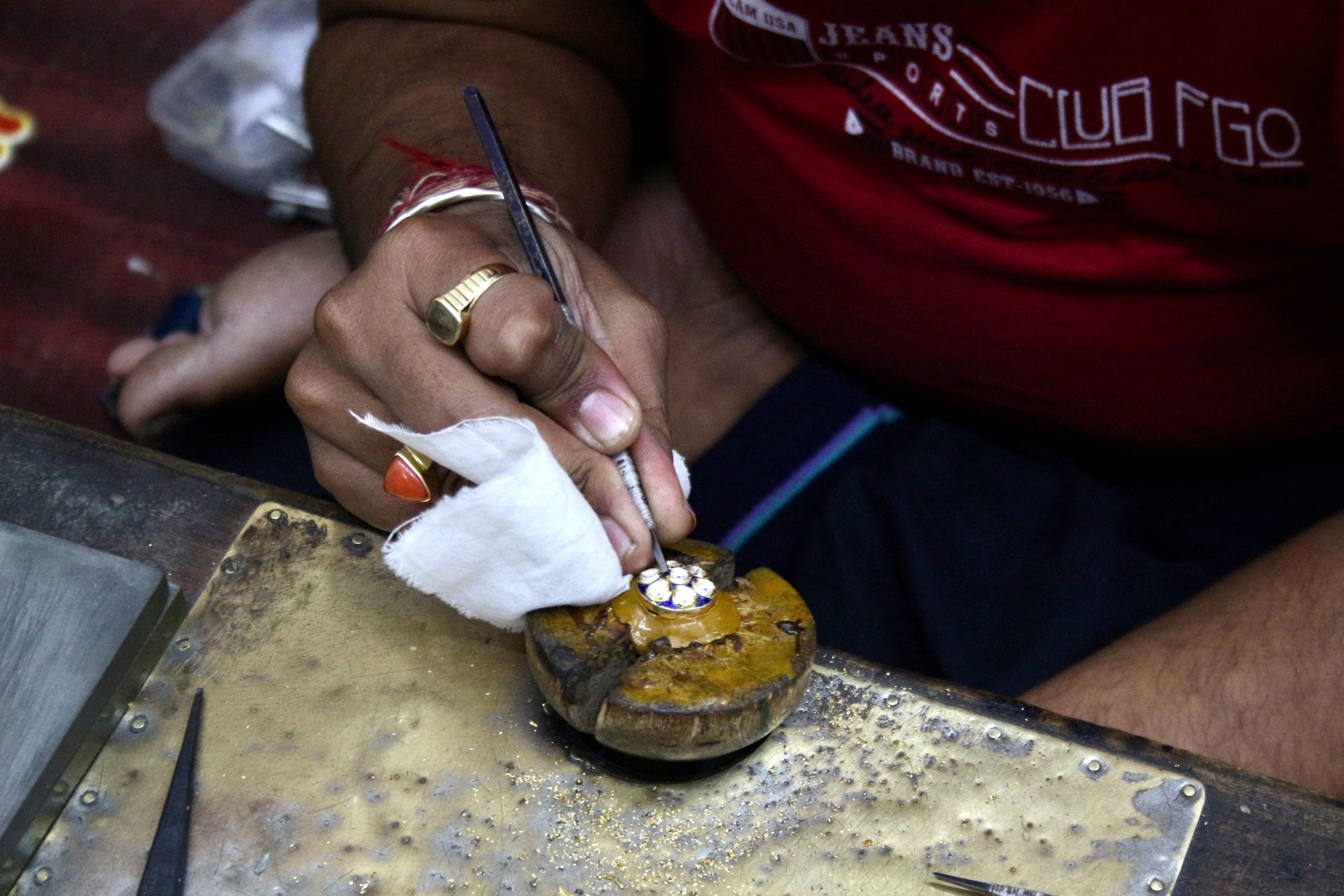 putting stones together
putting stones together
To insert the small parts properly, it is very practical to have an extremely flexible index finger joint.
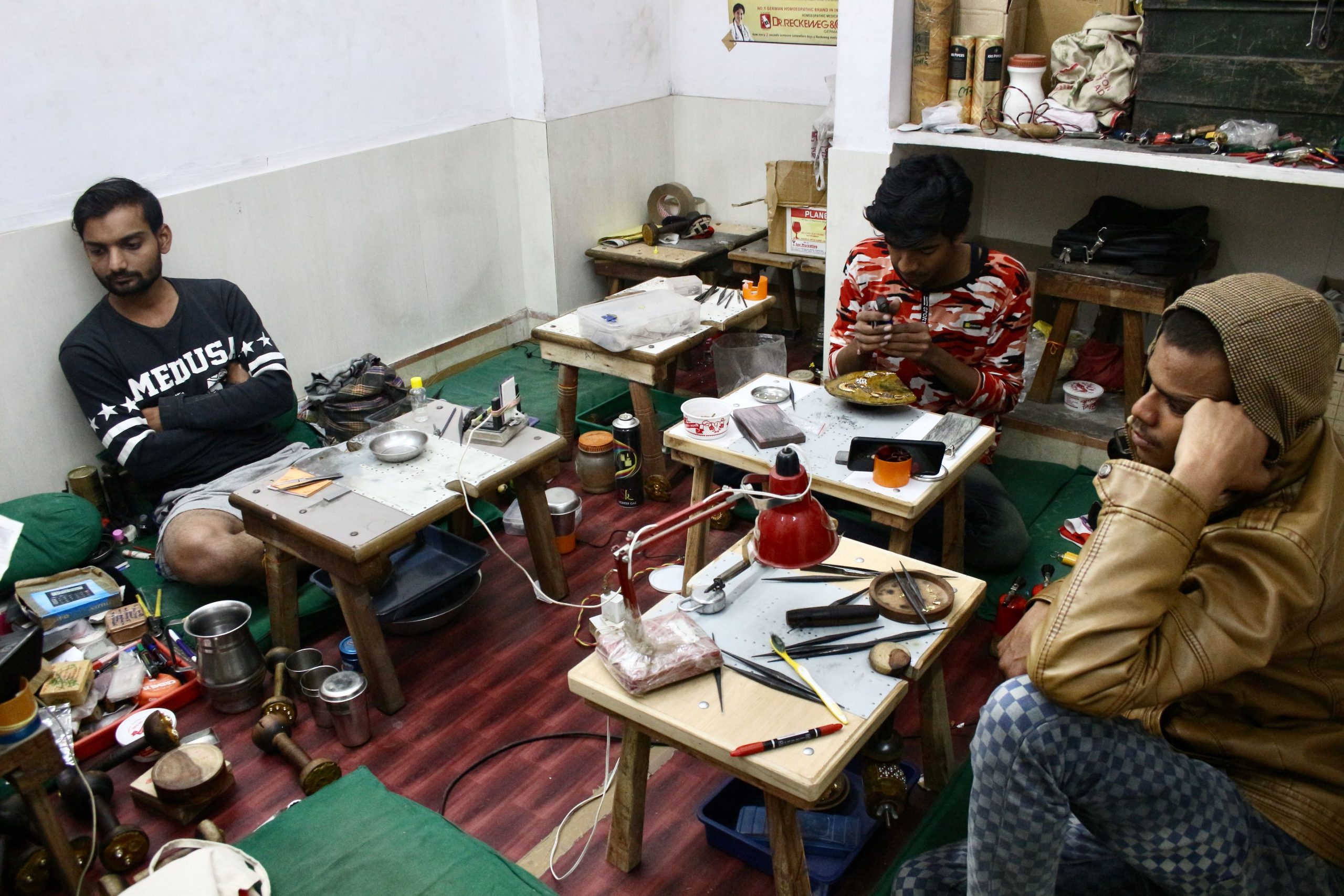 They sit there every day working away
They sit there every day working away
Has anyone ever heard of Meenakari? It was new to me – but I am by no means a jewellery enthusiast either. It originated in Persia and was brought to Rajasthan by the conquerors. Enamel paint is applied to precious metal to create pieces of jewellery. Or refines them at the end.
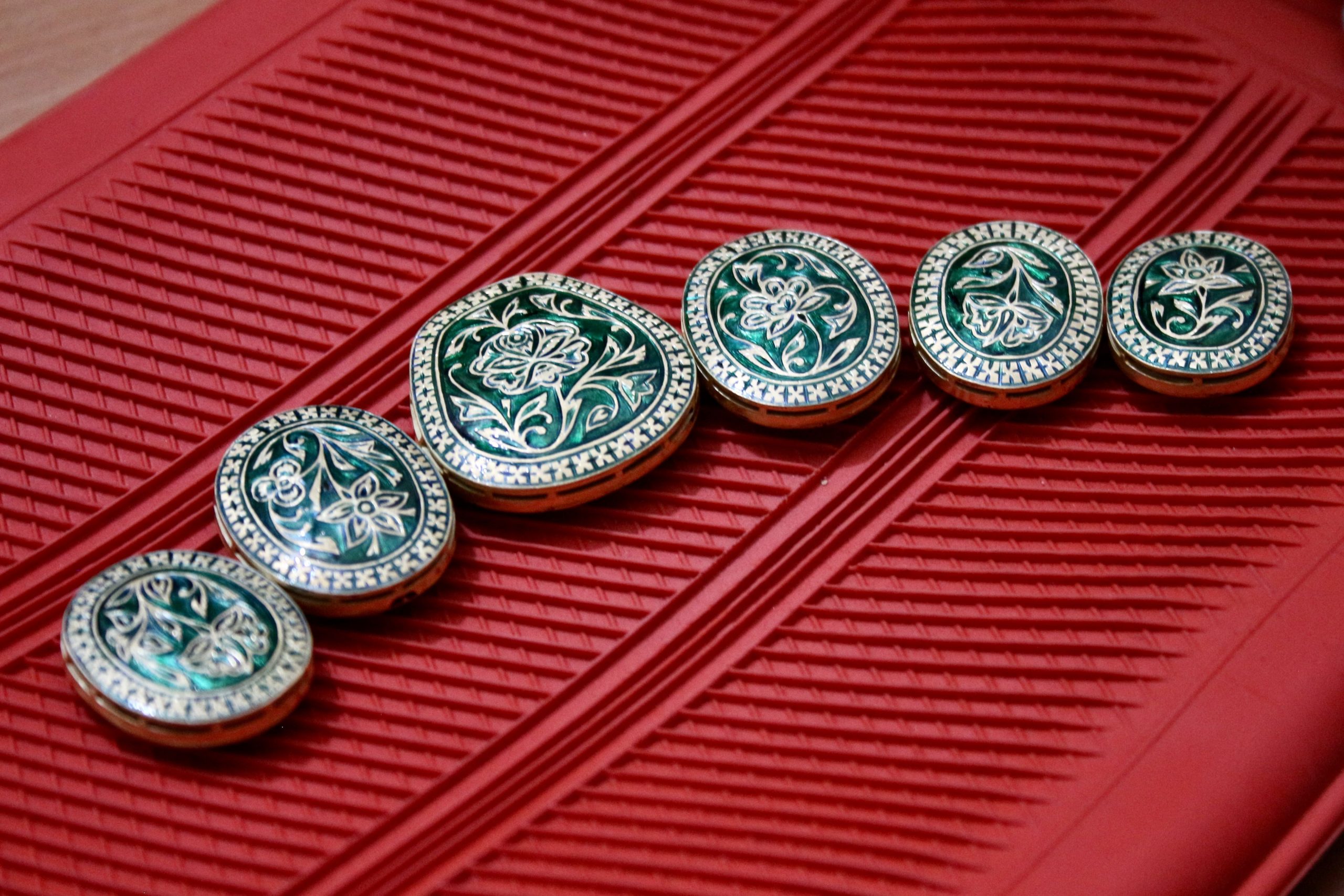 final Meenakari-Work
final Meenakari-Work
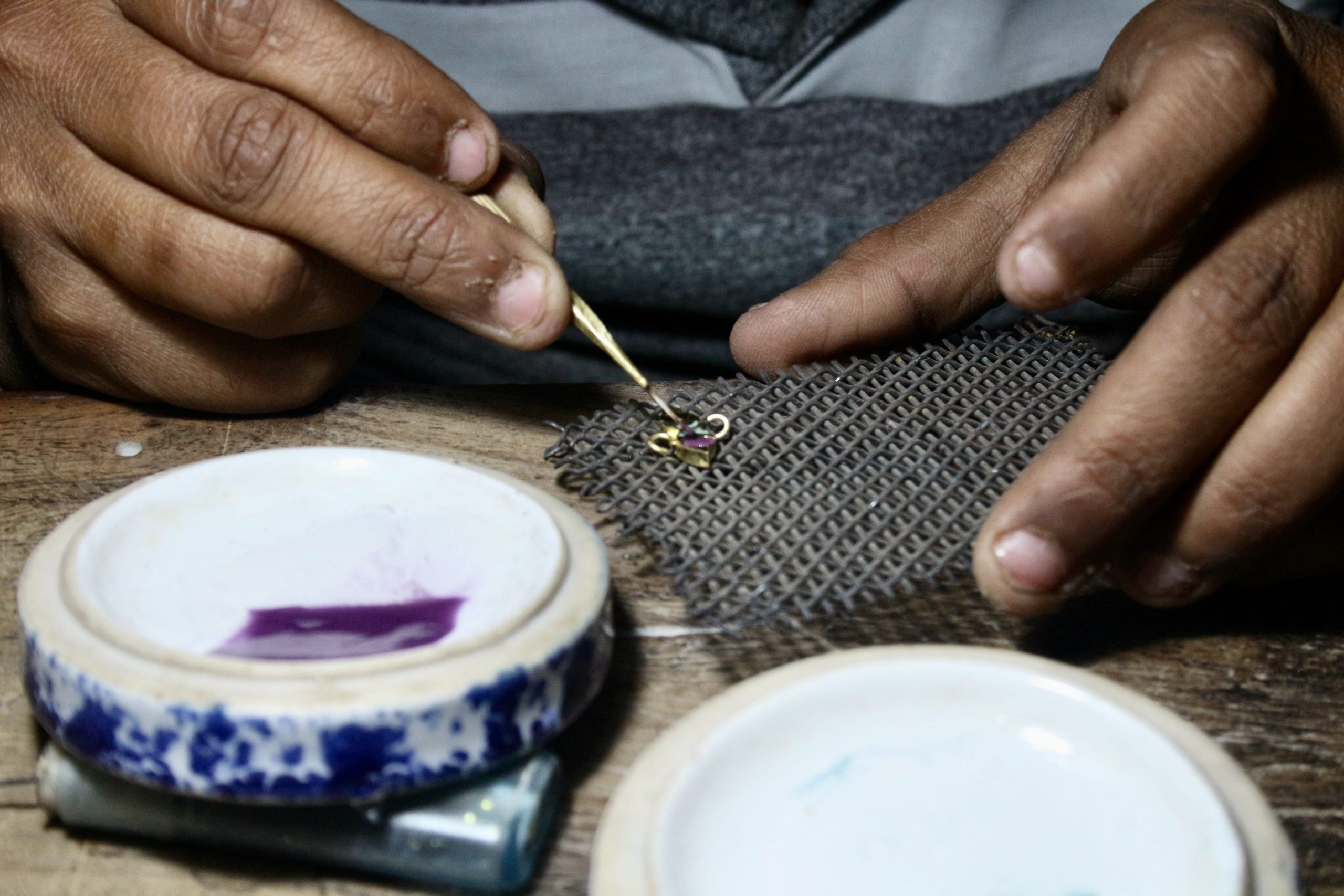 The work is incredibly small and fine
The work is incredibly small and fine
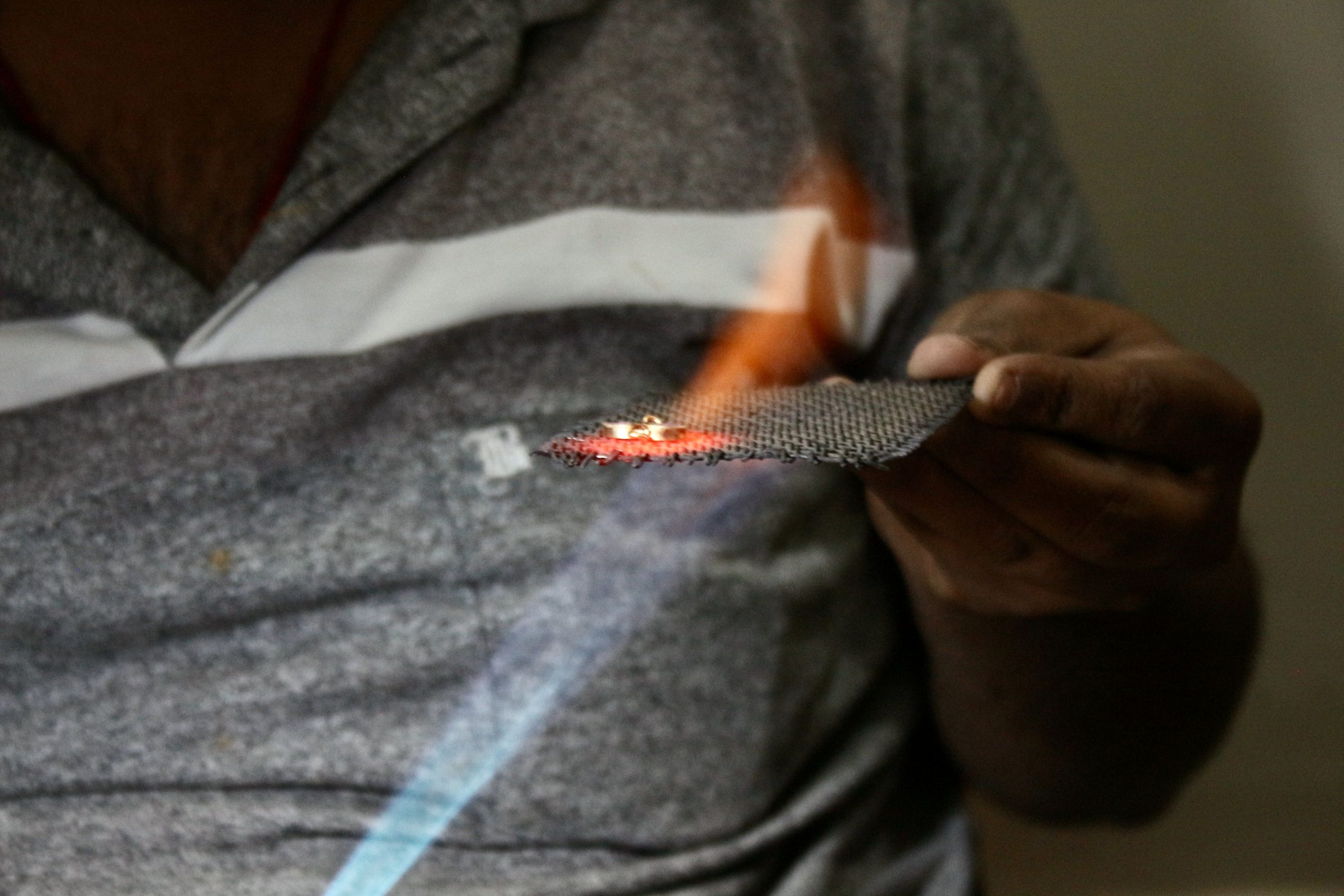 And in the end it is burnt on
And in the end it is burnt on
Then we visited other dyers. Here, the whole piece of fabric is dyed first. That didn’t look particularly environmentally friendly to me….
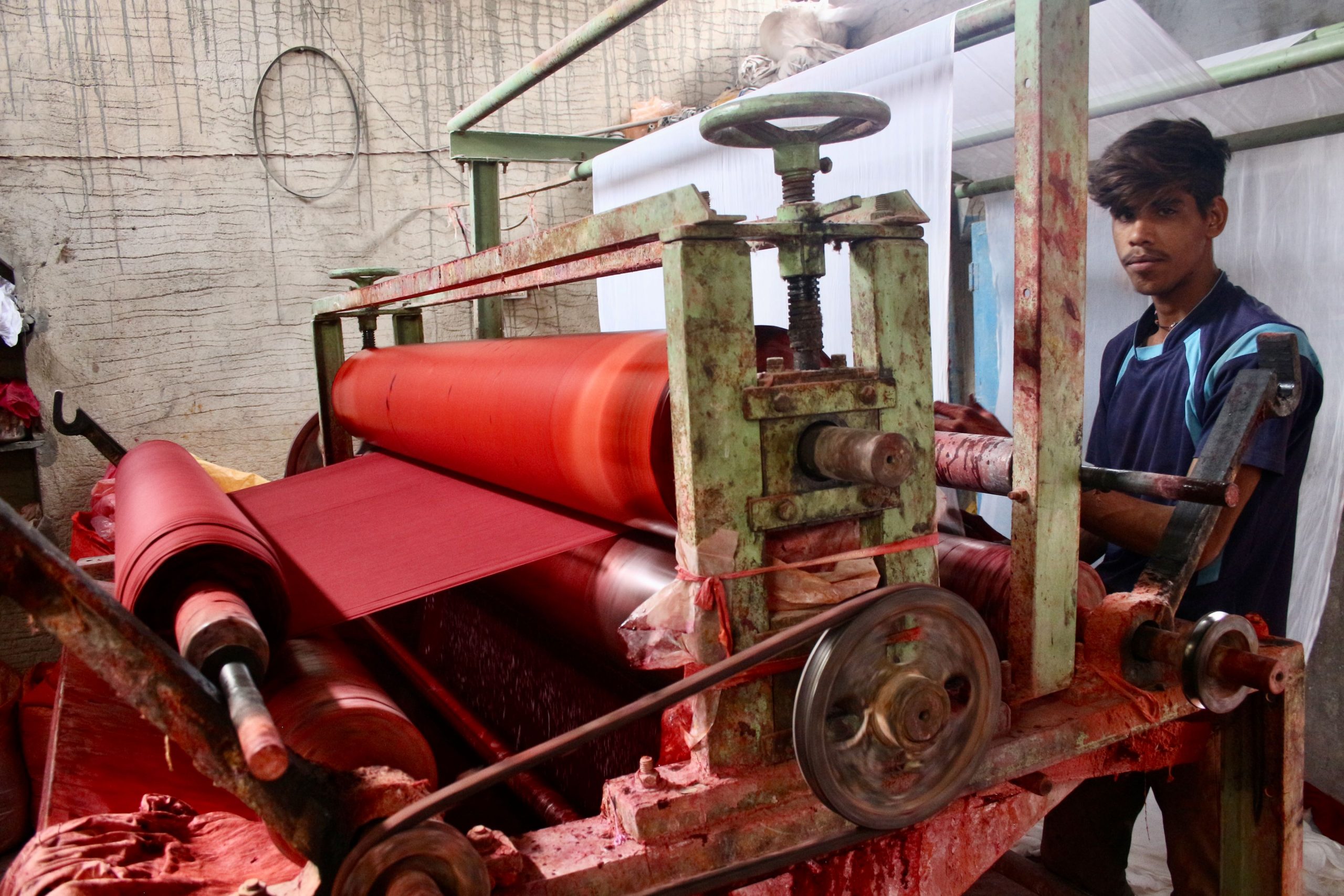 1
1
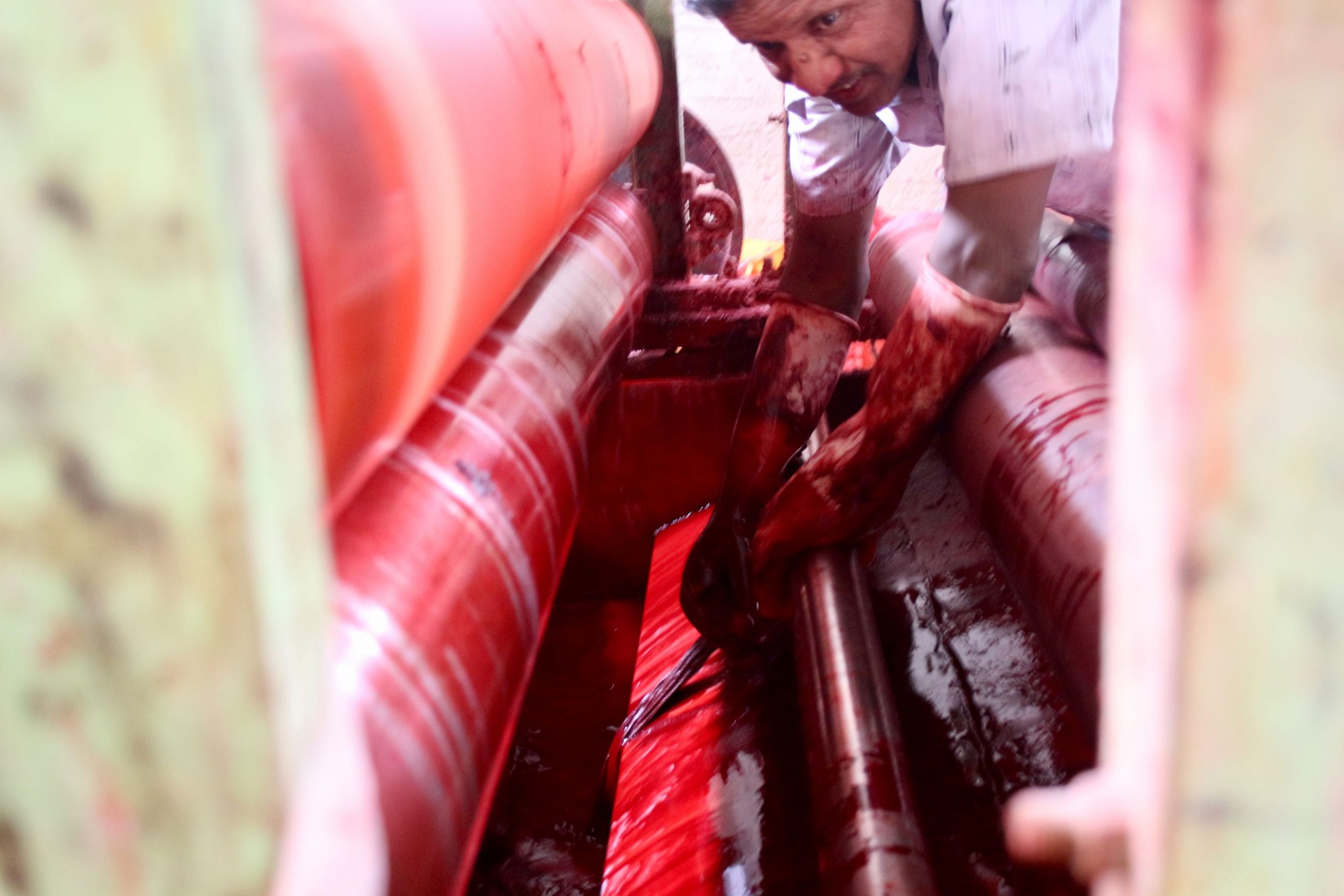 2
2
The piece is then refined using various materials.
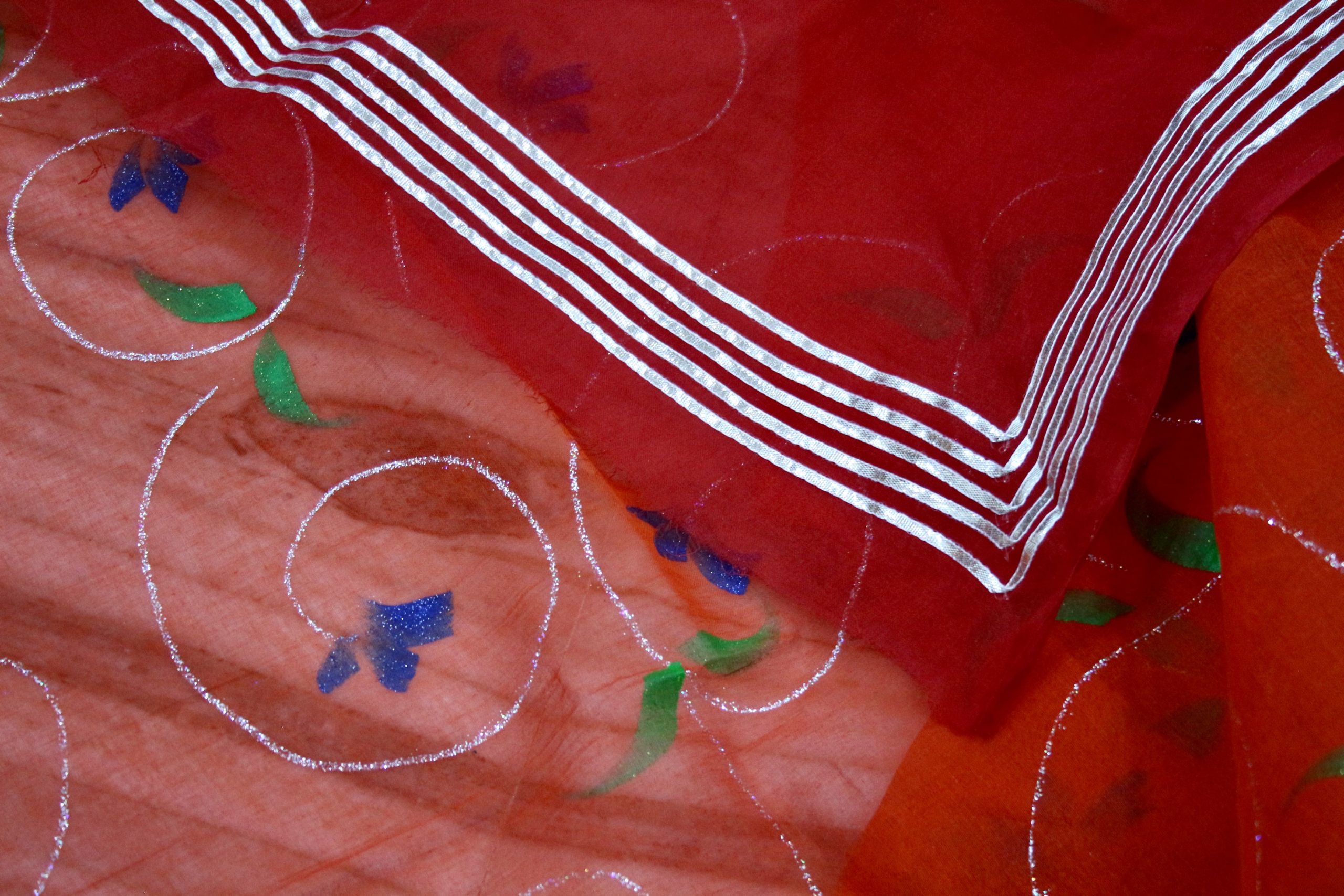 final product
final product
I spent the longest time with gold printing. Stamps are dipped in a kind of gold colour and printed onto the fabric by hand. The excess gold is swept off.
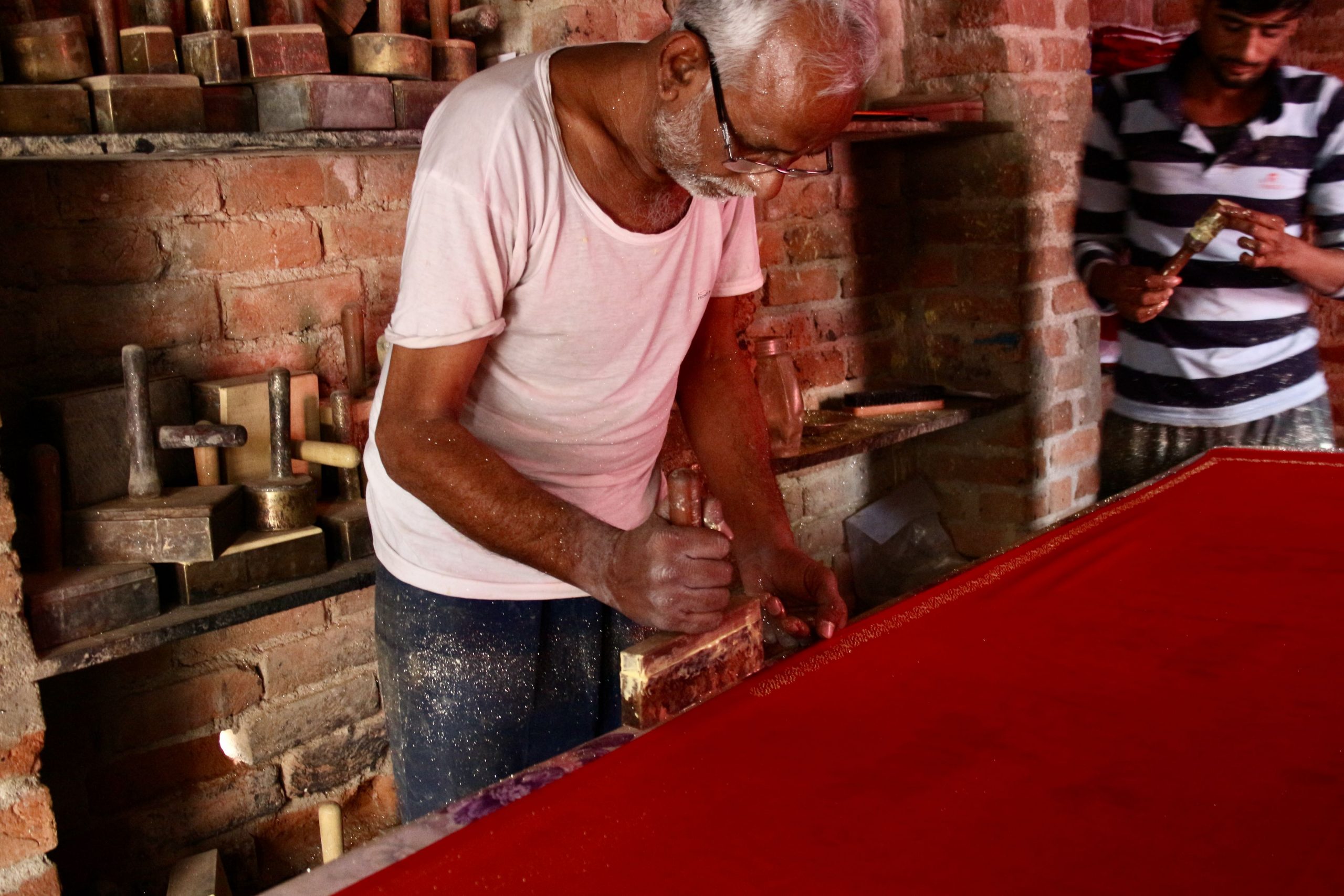 1
1
 2
2
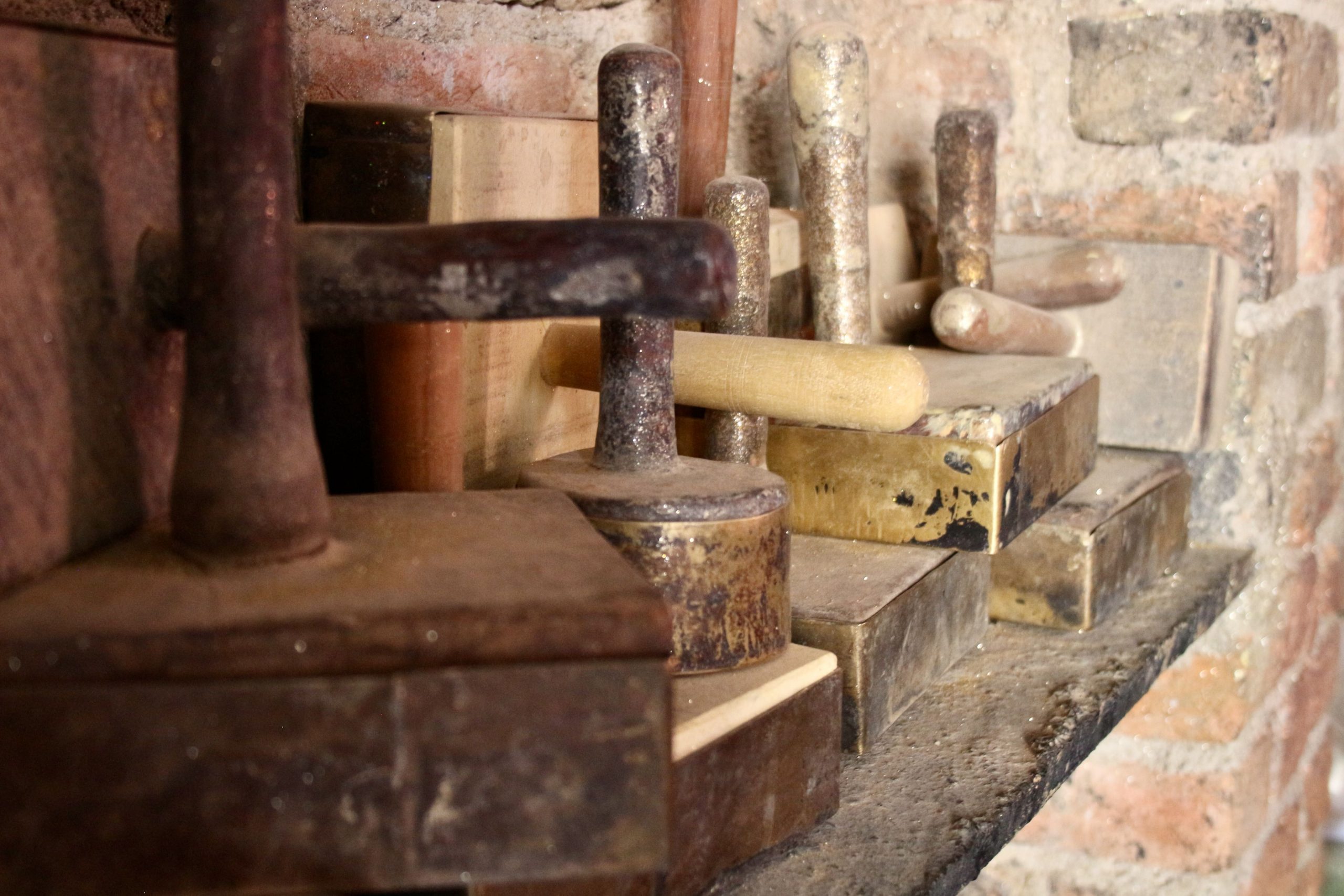 3
3
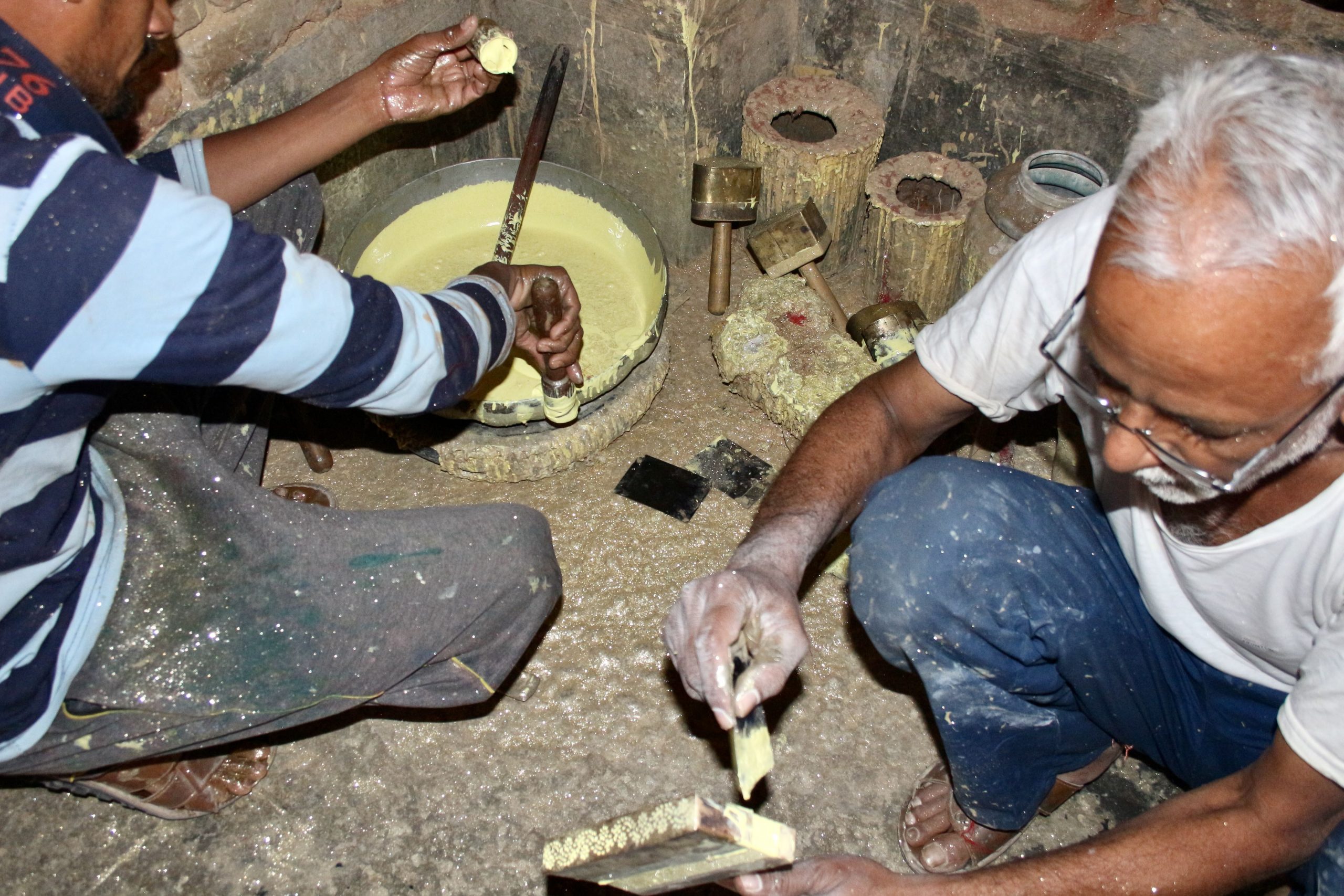 4
4
The fabrics are then hung up (see above). This gentleman has been doing this all his life. The gold doesn’t stick 100% and so not only the workers but also the visitors have become a little golden.
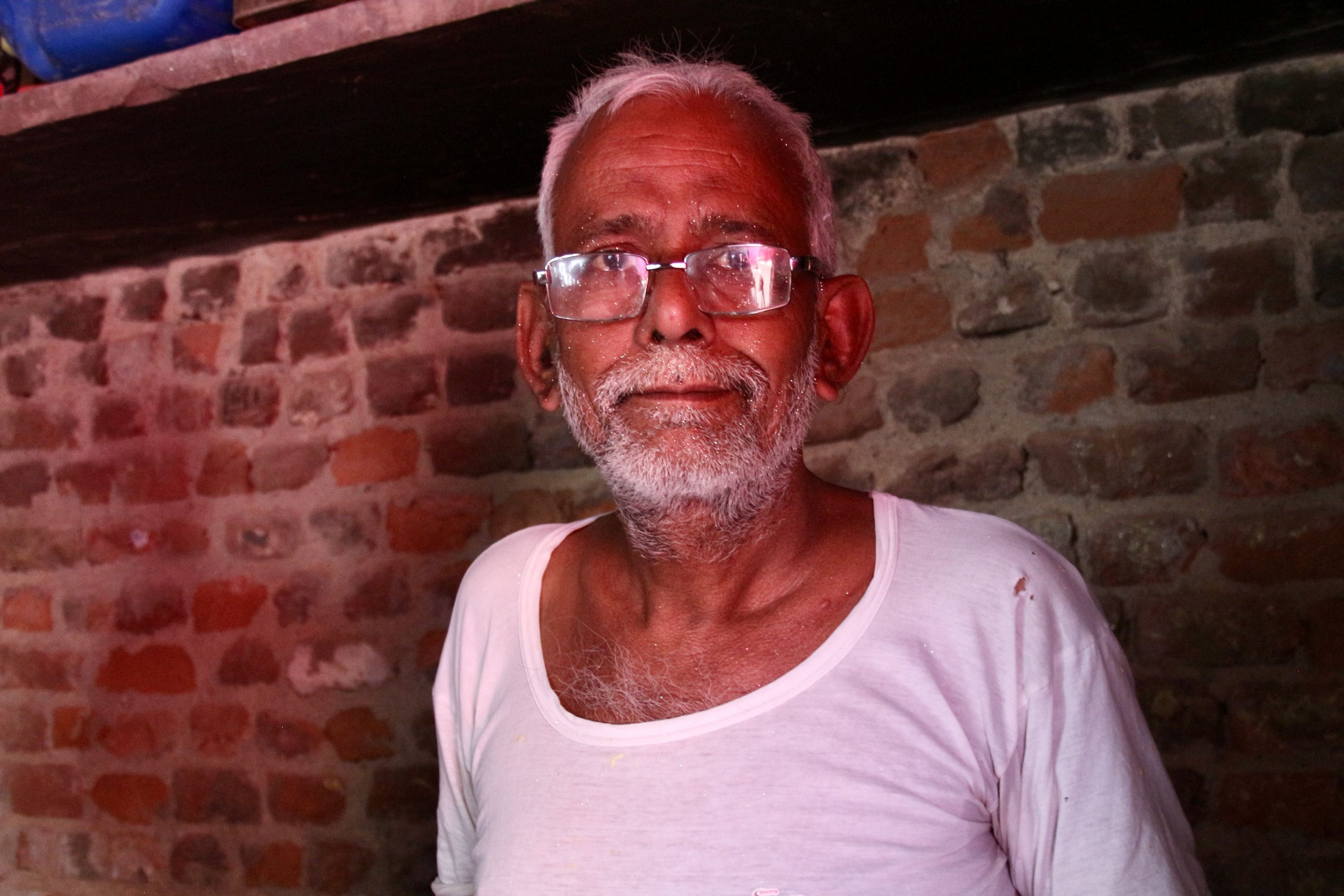 golden sparkled
golden sparkled
There is also another form of fabric printing. The people from the previous blog post printed the patterns on the single-colour dyed fabric part. Here it’s the other way round: first the pattern is printed and then the rest of the fabric is dyed. The “slide tray system” is also used for this.
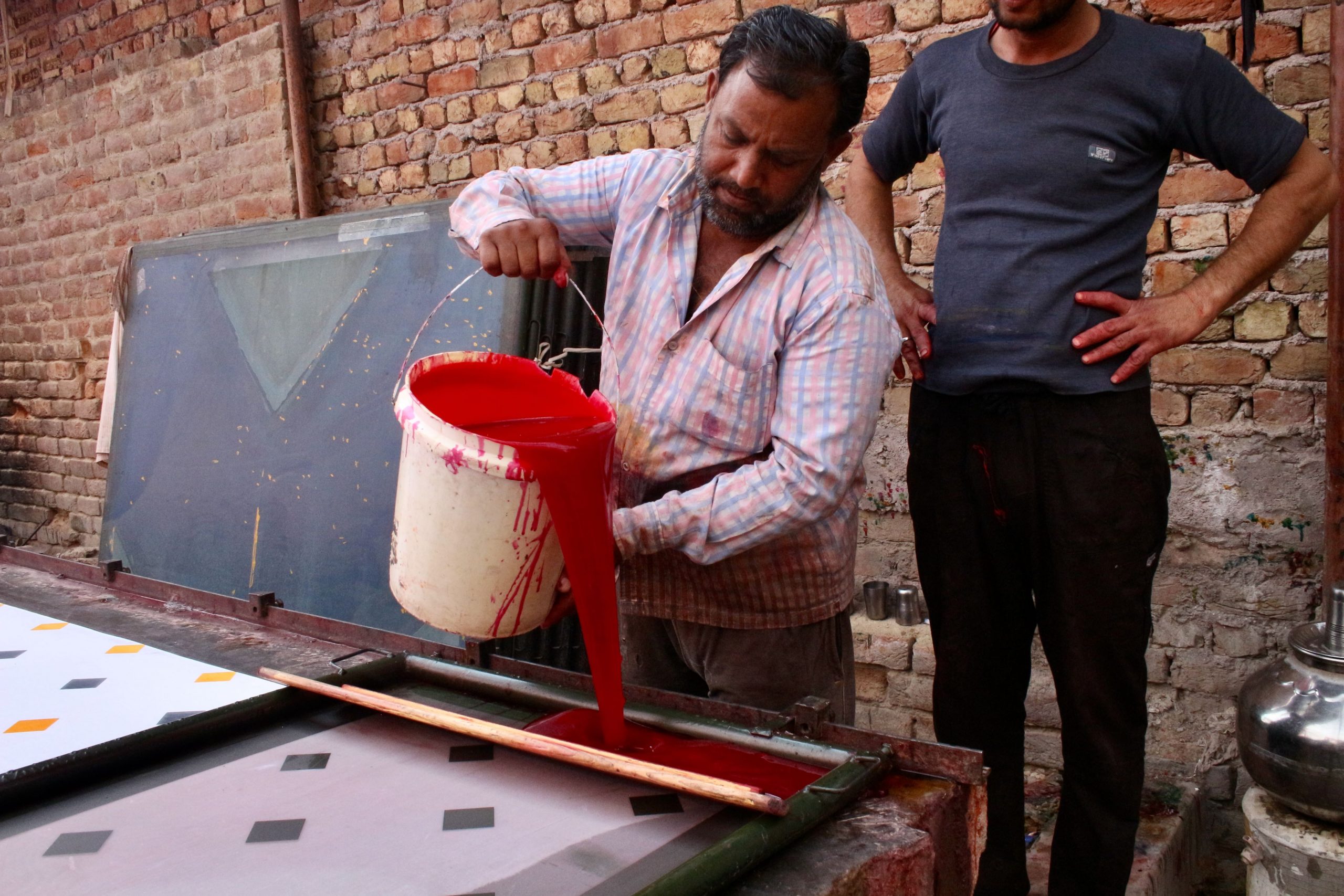 1
1
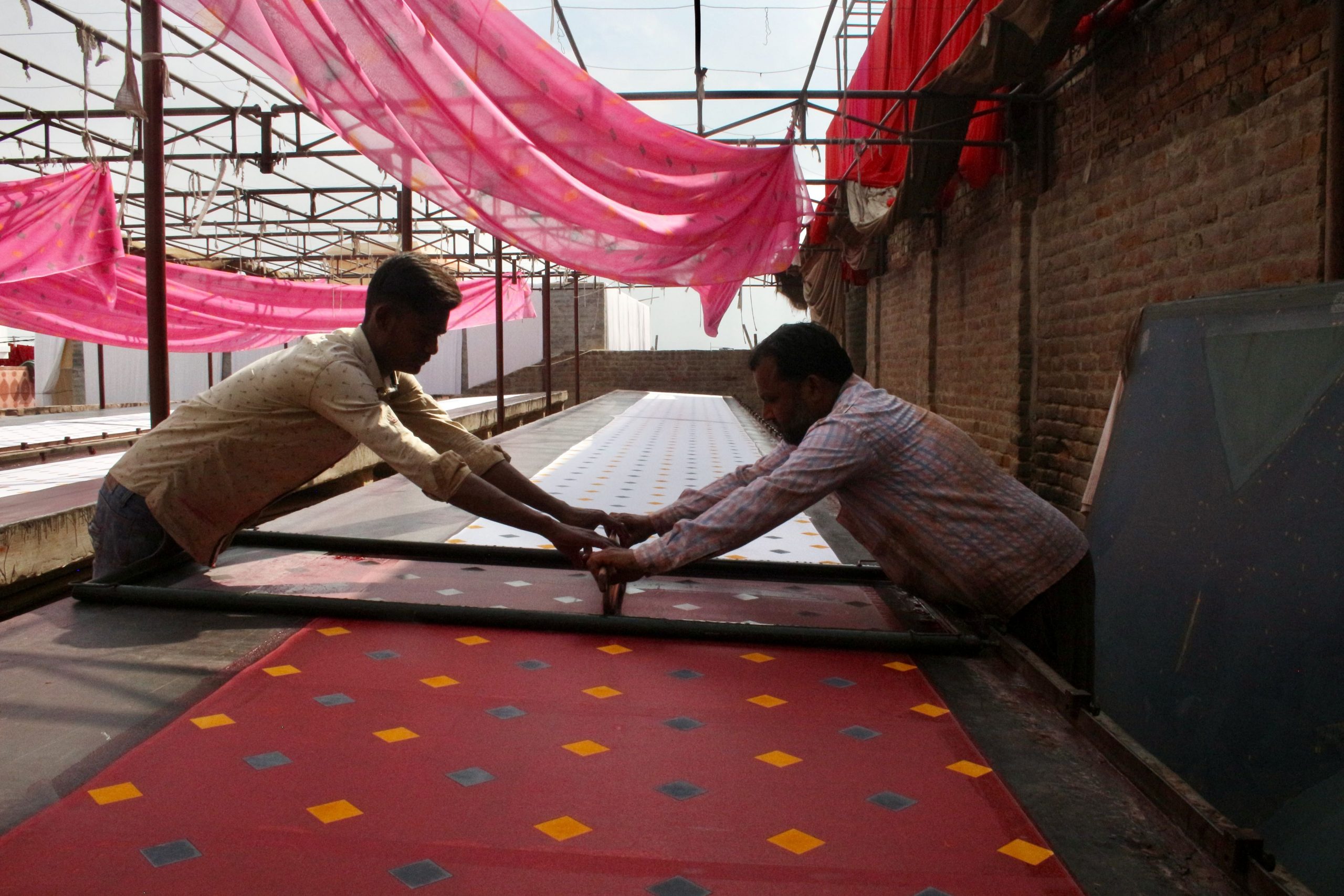 2
2
Lastly, we visited dyers who dyed fabrics in three colours.
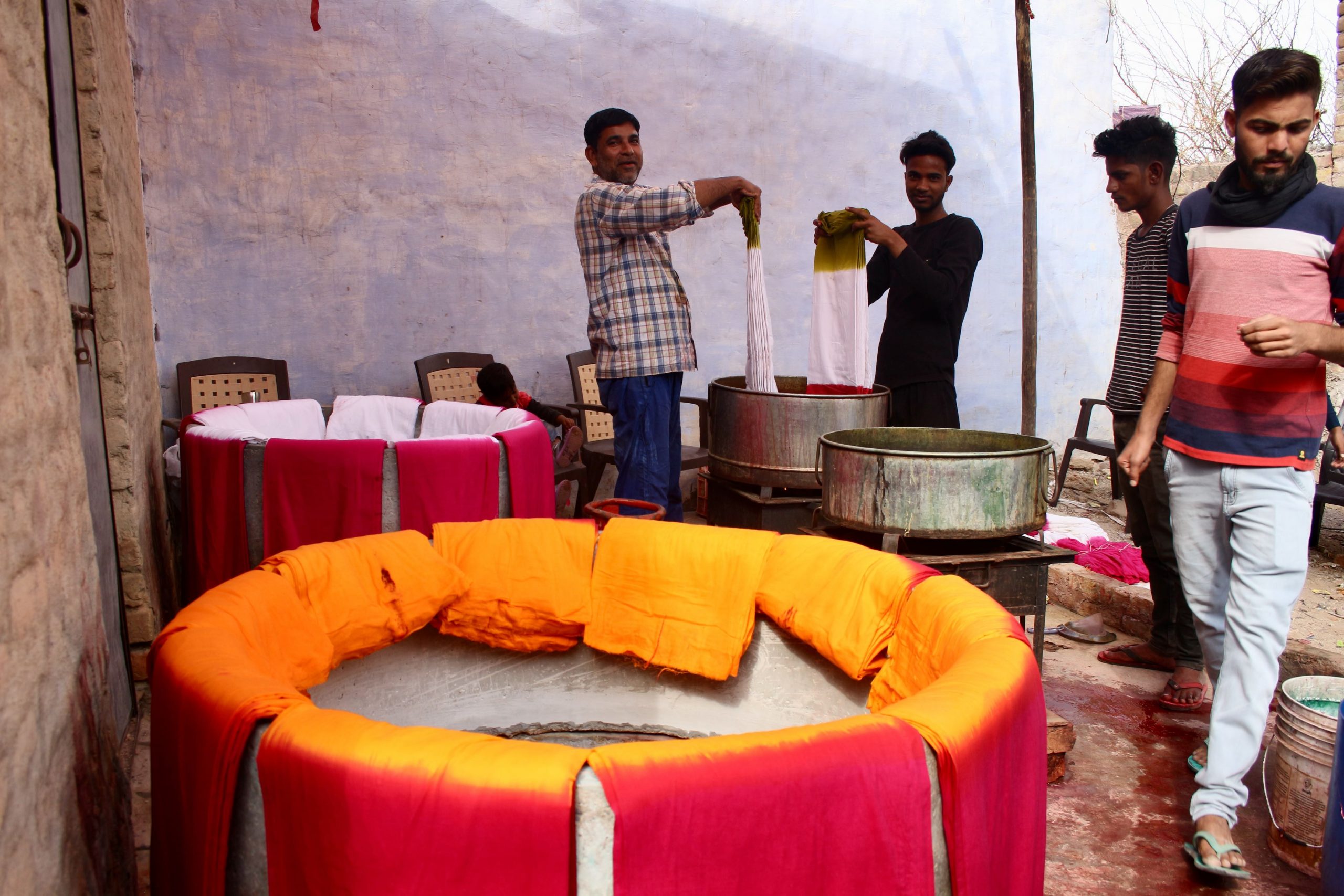 1
1
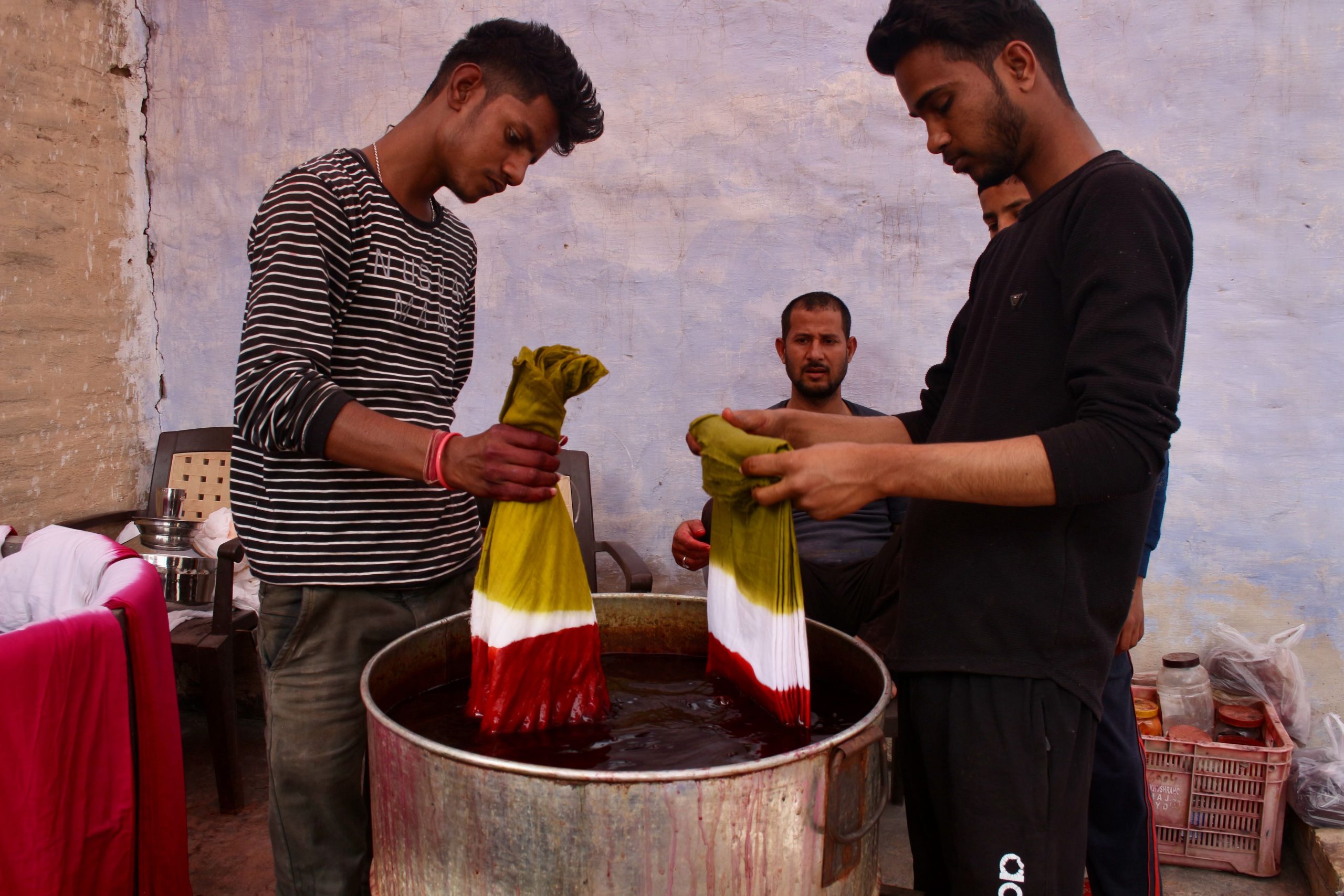 2
2
I find it quite exciting to watch how things are made in India that you can buy in the shops. Much more is done by hand than you would expect. I also find it interesting that there are many large family groups that have been doing the same work for generations. Of course, there are also innovations and changes – but the principle and the expertise remain the same. It’s a fascinating world – at least for me.
